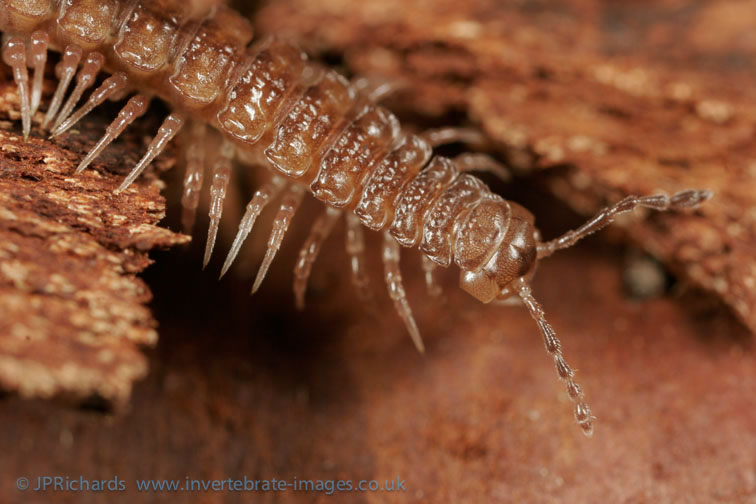Polydesmus inconstans Latzel, 1884
Status:
GB IUCN status: Least Concern
ID Difficulty
Identification
It is not possible to reliably identify Polydesmus millipedes without examination of male gonopods or female epigynal structures. Immatures cannot be identified.
Care needs to be taking to separate this species from other widespread species such as Polydesmus angustus, Polydesmus coriaceus and Polydesmus denticulatus.
Distribution
This is a frequent and widespread species in Britain and Ireland. However, records from south west England, south west Ireland and Wales are surprisingly sparse considering the species has an Atlantic distribution.
Polydesmus inconstans is found in western Europe from Spain to Norway, but has spread north as far as Iceland and east to the Ukraine through an ability to colonise synanthropic habitats (Kime, 1999). Jeekel (2001) suggested it may even be a recent arrival in the Netherlands. Blower (1985) stated it had been introduced to North America.
Habitat
As with P. angustus, this species is found in almost any habitat where millipedes occur but analysis of the recording scheme habitat data suggests strong associations with sand dunes and with grassland and a strong negative relationship with woodland. Kime (2004) reported it did not occur in sand dunes but was common in grassland in Belgium. Gregory and Campbell (1996) associated the species with damp river-side grassland in Oxfordshire. Although Kime (2004) noted it was especially common on calcareous grassland in Belgium, the habitat analysis provides no evidence of a preference for calcareous soils in Britain and Ireland.
Phenology
Observations on a population of this species in Michigan, USA show animals from eggs laid in summer will mature the following spring (Snider, 1981) but Blower (1985) suspected temperatures in Britain and Ireland are probably too low to allow this annual life cycle. Both sexes die following reproduction so few adults are present from late summer through to the following spring when a new generation matures. Although there are a few records of adults from all months of the year, they are collected most frequently between April and June.
This species account is based on Lee (2006).
Links
MilliBase - Global catalogue of Millipedes: https://millibase.org/aphia.php?p=taxdetails&id=938163






